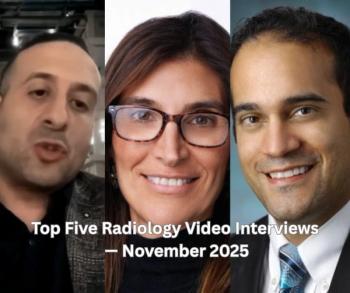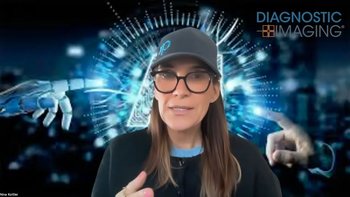
Can We Close the Radiology-Surgery Gap?
The technology exists to help radiologists and surgeons work better together.
It is worthwhile to begin with some key points from a foundation article by Hegarty et al on the subject of spatial cognition in medicine.1
“All medical professionals depend on a detailed understanding of anatomy, which involves such spatial concepts as the shape of anatomical structures, where they are located relative to one another and how they are connected.
Performance of surgical tasks requires a broad range of spatial processes in order to plan, navigate, and reason using complex representations of space. In MIS the surgeon must rely on imagery showing anatomical structures from unusual angles never seen in anatomy textbooks.”
The challenges described above, known as spatial cognition, are compounded by the limitations associated with 2D or 2.5D (viewing 3D data sets in 2D). Having to construct 3D recreations in one’s mind while viewing a series of 2D images is a cognitively intensive process.
This is the present practice in medical imaging and continues to give rise to the
Hegarty suggested that working with holographic 3D images could make spatial cognitive abilities less of a concern when it comes to reading medical images. It’s as if the holographic images are doing the work for the reader so they don’t have to rely only on their internal visualization skills.
The concept of using holography has been presented by Hackett.2 In this paper, it is demonstrated that medical holography for basic anatomy training provides statistically significant improved performance over traditional textbook materials in understanding anatomy, especially in regards to spatial relationships. The study also points out that cognitive load measures were lower using the holograms, lending credence to the notion that it is easier and more intuitive to process complex medical information from holograms.[[{"type":"media","view_mode":"media_crop","fid":"29593","attributes":{"alt":"Clinical efficacy and workflow","class":"media-image media-image-right","id":"media_crop_6062893802128","media_crop_h":"0","media_crop_image_style":"-1","media_crop_instance":"3070","media_crop_rotate":"0","media_crop_scale_h":"0","media_crop_scale_w":"0","media_crop_w":"0","media_crop_x":"0","media_crop_y":"0","style":"height: 263px; width: 350px; border-width: 0px; border-style: solid; margin: 1px; float: right;","title":"Figure 1. Clinical efficacy and workflow potential with expertly-derived protocols to IHS.","typeof":"foaf:Image"}}]]
In order for this type of advanced visualization to be fully accepted by surgeons, the ability to grasp and interact with objects in open 3D space is essential. This capability, or interactive holographic system (HIS), is now being developed by a number of companies in the field.
Applying expert derived protocols to IHS provides potential for optimizing clinical efficacy and workflow (see Figure 1). IHS alone may be of low benefit, similar to the situation with the early days of PACS - which brought the trend of buying new displays without changing behavior and still printing lots of film. Being protocol driven, with present technology, has a moderate benefit. The key to success is believed to be the combination of IHS and a protocol-driven workflow.
Can we close the radiology-surgery gap? The tools are available. The opportunity is there. It is up to us.
References
1. Hegarty M, et al. The Role of Spatial Cognition in Medicine: Applications for Selecting and Training Professionals, Chapter 11; Applied Spatial Cognition, G.L.Allen, Ed., Erlbaum, Mahwah, NJ.
2. Hackett M. Medical Holography for Basic Anatomy Training, I/ITSEC, 2013.
Newsletter
Stay at the forefront of radiology with the Diagnostic Imaging newsletter, delivering the latest news, clinical insights, and imaging advancements for today’s radiologists.




























